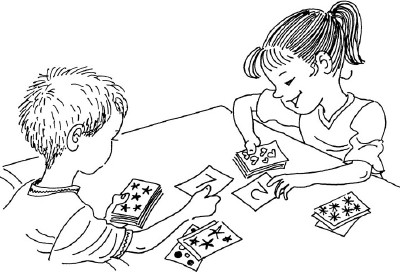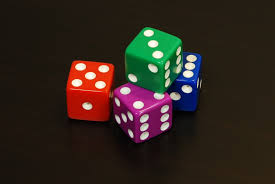|
April is Poetry Month! Many students are less than enthusiastic when they are on the cusp of starting the poetry unit in their language arts class, but many students are excited. Students that are not excited see it as a daunting task, while students that are excited see it as the perfect opportunity for them to express themselves with limited writing rules. I was always a part of the group of students that dreaded poetry. In fact, I have the image of the poetry book we used in high school, Sound & Sense by Laurence Perrine, seared into my memory. It was not a fun time for me. I didn't like it, had difficulty writing it, and even more difficulty interpreting it. However, that all changed when I became a teacher and was on “the other side" of this creative form of expression. I attended a conference and one of the sessions I selected was about poetry. The woman who presented was amazing! She convinced everyone in the room that we are all poets. She had us complete two short poetry assignments during the session, and I surprised myself at what I created. I was hooked. I decided to use what I had learned at the conference in my classroom and my students experienced similar success. In honor of poetry month, I am going to write two different types of poems each week. At the end of April, I will have penned eight different original poems, and I will post them here each week. Below is the first of the two poems for week one.  Haiku Springtime has arrived Birds, green grass, pollen, and rain Allergies galore
0 Comments
Learning basic math facts will always be a part of every child’s life. It's a vital component of having a solid foundation for success with higher level math skills. During my elementary school days, students relied heavily on flash cards and daily repetition via math facts quizzes/tests in order to become proficient. Even today, I vividly recall taking math facts tests everyday in Mrs. Smiley’s 2nd grade class. It proved to be an effective method for learning the facts. I even remember her teaching us how to fold the manila paper into sixteen rectangles (where we would write each problem and its answer as she recited them).
During my years as a full-time fourth grade teacher, I saw a handful of students each year that would struggle with learning basic facts. It seemed as if by the time students had reached fourth grade they would know most of the facts “by heart”. However, that was not the case for some students. During my Back to School Night presentation each year, I suggested that parents have their child practice basic facts a little bit each night (10-15 minutes). I also informed my class on the first day of school each year that having a firm grasp of basic math facts would help them tremendously as the year progressed, and we encountered more challenging concepts. Not everyone heeded my advice. My goal for each student was to have them achieve what I called “instant recall” (aka math fluency in educational jargon) of basic math facts for addition, subtraction, multiplication and division. Meaning they should be able to answer within two seconds. Based upon their in-class and homework assignments I was aware of which students were not practicing at home. So, I decided to implement a plan to offset their lack of extra practice. I used a two pronged approach. I used an old school method, Mad Minute, to begin every math lesson. I also created homework assignments via www.thatquiz.org for them to complete. It was essentially the same as the Mad Minute they completed in class (only it was online). It is very easy to set up. I selected the number of facts and set the timer to stop after one minute (after one minute, the assignment ended regardless of how many problems were completed). I started with 20 problems. Then gradually moved to 30, 40, 50 and finally 60. The kids really enjoyed it! It was a different twist on what they did in class and it involved a tool that is now a part of the daily life of most students. One of the best features about the online assignments was that it was automatically graded when they finished. In addition, since I created a class list on the website, I was able to log in later that night to see if everyone had completed the assignment. It was very helpful, and several students made marked improvement. There are numerous websites students can visit for basic fact practice, but there are also some games that don’t involve a computer that students can play. Below are two such games that former students of mine enjoyed playing. I have also added a link to a website that has fun games for students to play to practice their basic facts. 1. Multiplication War (played with a standard deck of cards) 2. SKUNK - best played with standard dice, you can also use a standard deck of playing cards, to make it more challenging you can use 12, 15, 20, and 30 sided dice 3. www.multiplication.com Please see the "Websites" page under the "Resources" tab on our website for more great websites for math. There are also websites for science, language arts, social studies, and logical/critical thinking. |
AuthorRandy Sally Archives
June 2023
Categories
All
|




 RSS Feed
RSS Feed
